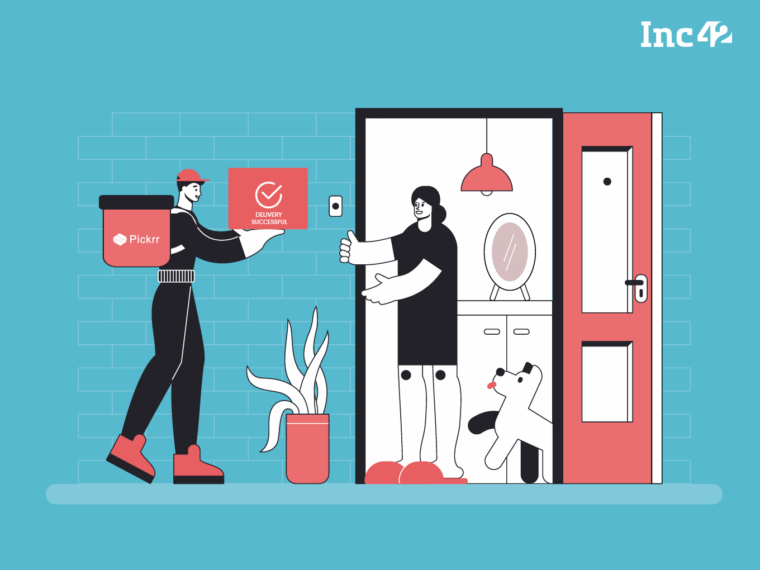
SUMMARY
RTOs can lead to significant costs for D2C brands, triggered by reverse logistics, warehousing and reshipment
To reduce RTOs, D2C brands must focus on a better shopping experience and a smooth post-purchase journey
3PL player Pickrr claims its data-powered RTO prediction tool can help reduce ‘returned orders’ by 50%
The boom in internet shopping is changing the face of retail in India. As tech-savvy new-age consumers increasingly prefer the convenience of online shopping, a fresh crop of digital-native, direct-to-consumer (D2C) brands have emerged to meet high customer demand.
There are over 50K+ digital first brands, typically selling through their websites/apps but also listing on marketplaces for better brand exposure. Eventually, they enter brick-and-mortar retail, hoping to grow pan-India and compete with legacy players.
The D2C market has grown exponentially since the pandemic hit us in 2020. It is predicted to exceed $300 Bn by 2030, growing at a 24% CAGR. However, not all brands can meet high customer expectations for an extended period to corner long-term success. This is especially true in a consumer-first market, where price parity and product quality are a given but no longer sole differentiators. The speed and quality of delivery are now equally critical for long-term customer retention, thus compelling retailers and logistics firms to up their game.
Gaurav Mangla, cofounder and CEO of the third-party logistics (3PL) player Pickrr told Inc42 how online brands struggle to cope with RTOs (orders returned to origin after delivery), a major pain point for online brands that can severely hamper growth.
“When it comes to business operations, RTOs can lead to significant costs. These include reverse logistics [management], warehousing and reshipment,” he said. In addition, there could be in-transit damage during call back, ageing of perishable products, repair/refurbishment costs and loss of sales as these items are not immediately added back to the inventory due to logistics and processing delays. Even when they are sold, companies tend to give discounts, further shrinking profit margins.
According to industry estimates, one in three orders ends up in RTOs, which means the rise in online shopping may lead to more ‘returns’ as witnessed during festival/holiday sales boom. This is bound to hurt a brand’s unit economics.
As a stakeholder pointed out, the scope of online is huge, but there is always the threat that things may not go as they should. Of course, identifying the right customers, fostering trust and long-term retention can iron out many of these hitches. But it could also get a bit tricky, especially for early-stage brands.
For context, let us look at a typical purchase journey. A customer selects and adds a product to the cart, places the order, adds contact details and checks out. In an ideal world, a brand’s worry should end there. But that is not the case due to RTO, or the return of a package to the seller due to non-deliverability.
There can be various reasons for failed deliveries. For instance, the address mentioned can be incomplete or incorrect, or the shopper may not be available to receive the order. The customer may have placed the order by mistake, changed his/her mind, may want to return the product post-delivery or ask for an exchange. Cancelling an in-transit order can also impact a brand as the product is already ‘out’ and logistics charges have been incurred.
In other words, there is no foolproof way of eliminating RTOs from the ecommerce ecosystem. But with the help of the right tools and strategies, D2C brands can minimise their impact.
How To Design Strategies To Reduce RTOs, Drive Growth
Set up in 2015, Gurugram-based Pickrr has worked closely with D2C brands from the beginning. Its journey started with 10 B2B and B2C brands and increased to more than 50 in 2022. According to Mangla, Pickrr’s offerings have evolved over the years to help digital-first brands mitigate RTOs, ensure smooth shipping and automate workflows for enhanced efficiency.
Although Mangla did not disclose the name, he revealed that Pickrr helped a personal care D2C brand reduce RTOs by offering same day/next day deliveries. The brand was able to reduce its RTOs by 30% and improve its first-attempt delivery rate (FADR) by 85%.
Mangla believes that brands should adopt a multifaceted approach to counter RTOs. “D2C players must understand what a customer wants while keeping the market demographics in mind,” he said. In fact, brands need to focus on three core areas – a better shopping experience, on-time delivery (along with accuracy) and a smooth post-purchase journey.
Let us quickly explore how brands can implement these successfully.
A Better Shopping Experience:
To create a strong top-of-mind recall, D2C brands must consistently enhance the shopping experience. Moreover, a better shopping experience leads to repeat purchases and effective customer retention. “Customers follow brands not just because of the products they offer but also because of the experience and satisfaction. It is important for D2C players to understand what their customers want and cater to them accordingly,” said Mangla.
There are many ways to improve one’s shopping experience, starting with the look and feel of the products listed on the website/app. The problem with selling online is that customers cannot touch and feel products as they do in real life. Hence, it is crucial to showcase each product’s features and appearance. This can be done through product descriptions and product videos, high-quality images and genuine customer reviews describing the pros and cons.
Additionally, brands can leverage AR/VR for better digital display and immersive shopping experiences. Think, for instance, how Lenskart operates, enabling customers to virtually try on the eyewear before making a purchase.
Mangla also asked brands to improve their packaging and implement a robust exchange, return and refund policy. These customer-friendly measures help reduce RTOs, as shoppers can make informed decisions and know exactly what they have ordered.
Quick & Efficient Delivery For A Smooth Post-Purchase Journey:
In the era of quick commerce, customers expect more from every order in terms of delivery or collection options. In fact, marketplace giants like Amazon and Flipkart call the shots partly due to their ability to make same-day and next-day deliveries (SDD/NDD) across pin codes.
To help D2C brands with SDD/NDD and make cost-effective decisions, Pickrr offers more than 30 shipping partners to choose from. In addition, there is Pickrr Connect, a real-time delivery notification system that allows sellers to connect with customers on their preferred channels (like WhatsApp and SMS) throughout the transit. It also allows a customer to confirm the authenticity of the order and modify the delivery address (if required) right after the purchase.
According to the Pickrr CEO, letting customers track their orders and communicate with brands during shipping is crucial so that someone is present during delivery.
“Pickrr Connect is a value-added service that helps brands confirm a desired delivery address, thus reducing RTOs,” said Mangla.
Pickrr’s clients can also opt for Pickrr Predict, an RTO prediction tool that uses advanced data analytics to identify risky orders and reduce RTOs by 50%. The tool analyses 50+ parameters including a customer’s order history to track the frequency of RTOs and validates the address provided by the user. In case of an incorrect or incomplete address or other red flags, the tool alerts the brand concerned for further action.
As more than 62% of online orders are CODs (cash on delivery), the chances of RTOs are higher in that segment, said Mangla. This usually happens when customers are not ready with the money at the time of delivery or if they change their minds when the orders arrive.
To counter this. Pickrr Predict allocates a risk percentage to each COD order. Based on the ‘risk’ score, D2C brands can take action. They can either cancel the order or incentive customers to convert their COD orders into prepaid ones. Pickrr allows brands to do this by sending links to customers on their preferred channel and incentivising customers with deals and discounts.
Why D2C Brands Need A Bharat Playbook
With the rise of online shopping in the wake of the pandemic, customer profiles are evolving fast. D2C brands are no longer catering to tech-savvy, urban shoppers alone, as ecommerce has broken the barriers to reach every nook and cranny of India.
According to a Unicommerce report, Tier 2 and 3 locations accounted for nearly 63% of online orders in 2022 in categories like fashion, food and electronics. Industry experts also believe this is the new customer base brands must target and tap into to grow sustainably in the coming years. Shoppers from Bharat (Tier 2, 3 and beyond) will dictate the ecommerce space, and D2C brands must be ready with the right strategies and tools to wow the next billion shoppers.
“Tier 2 and Tier 3 cities will emerge as major markets for D2C brands in 2023. I believe that consumer durables will lead the growth of online shopping, and this category should carefully watch these [new] markets,” said Mangla.
As a new battlefield emerges, D2C brands must build a new playbook to cater to this largely underserved market. Diversifying the product portfolio, reimagining the target audience and investing in modern technology infrastructure, especially in logistics, will be imperative for new-age brands to corner long-term success.






























 Ad-lite browsing experience
Ad-lite browsing experience